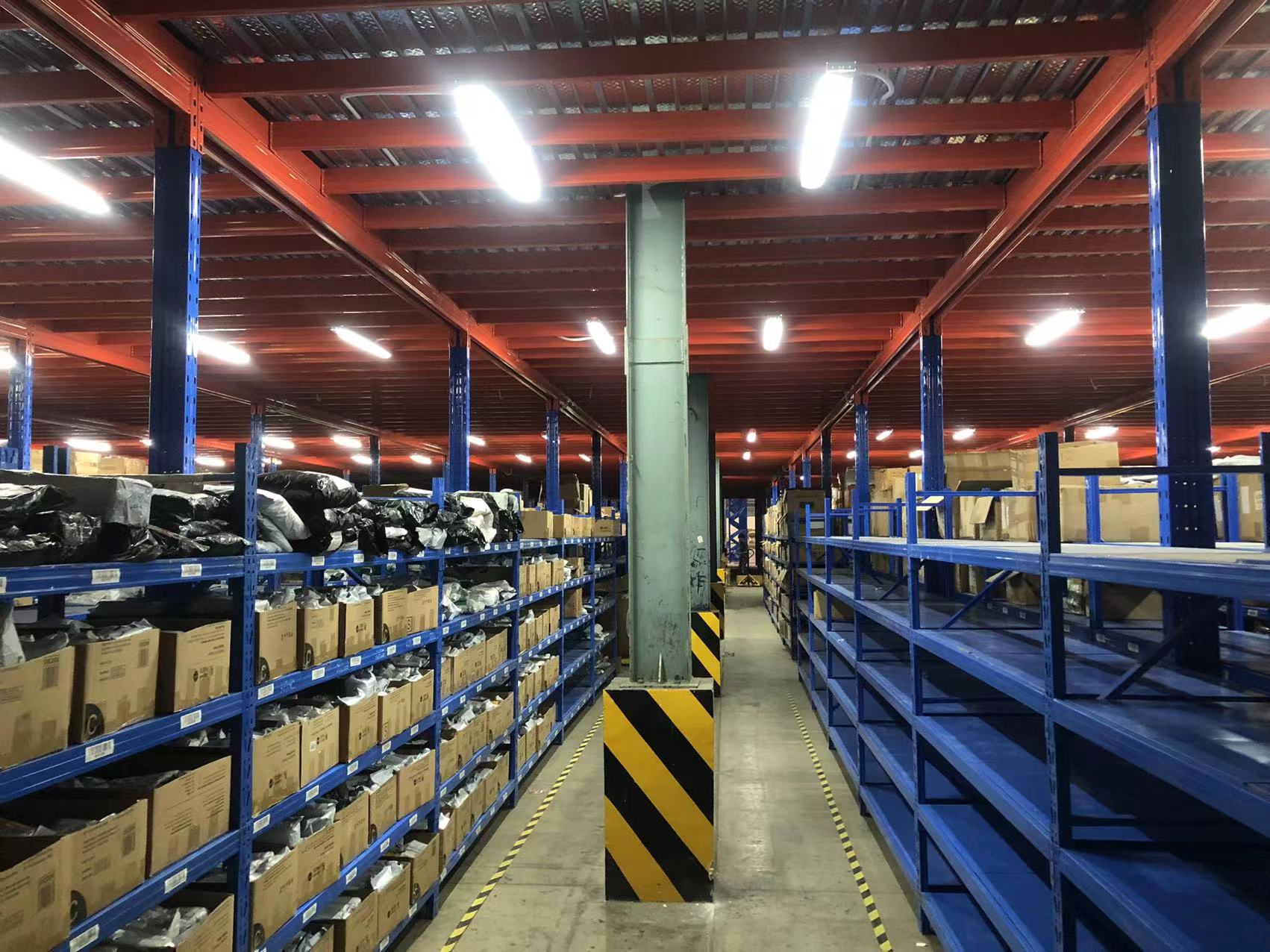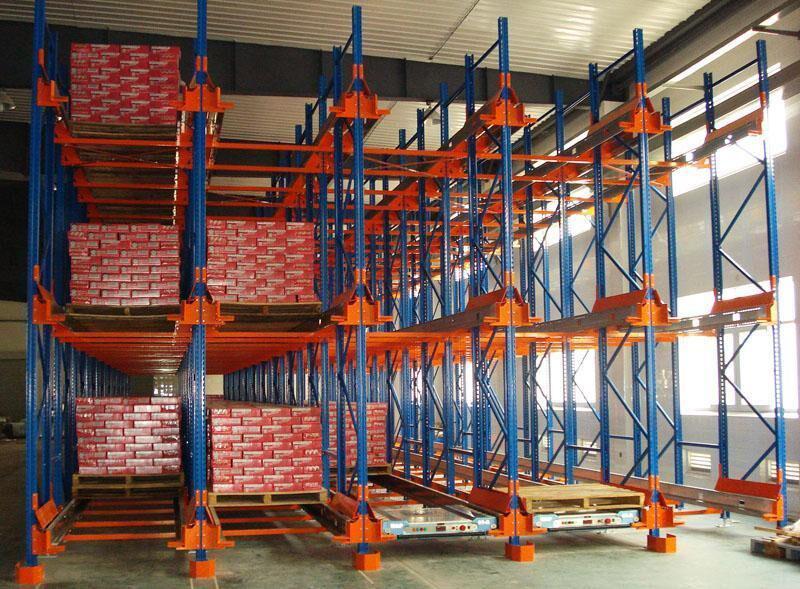In the high-stakes world of warehousing and logistics, your pallet racking system is the backbone of operations. But the bare frames and beams are just the starting point. The true power, safety, and efficiency of your storage solution lie in the often-overlooked racking accessories. These specialized components transform standard racking into a customized, high-performing asset, tackling everything from load stability and worker safety to maximizing every cubic foot of precious space. Neglecting them is like buying a sports car and never changing the oil.
Understanding and strategically implementing the right racking accessories is crucial for optimizing warehouse performance, reducing product damage, enhancing safety compliance, and ultimately boosting your bottom line. Let's delve into the top 10 categories that can revolutionize your storage setup:

1. Safety First: Essential Protective Racking Accessories
Safety isn't just a priority; it's a non-negotiable requirement. Accidents involving racking can be catastrophic, leading to injury, product loss, and significant downtime. These racking accessories form your first line of defense:
Beam Locks & Clips: These small but mighty components physically secure crossbeams to the upright frames, preventing beams from accidentally dislodging due to forklift impact or seismic activity. They are fundamental to structural integrity. Why it matters: Prevents catastrophic beam collapse, a major safety hazard.
Column Protectors / Upright Guards: Heavy-duty steel guards bolted to the front (and sometimes sides) of upright columns shield them from direct forklift impacts. Why it matters: Prevents costly damage to the structural uprights, maintaining system capacity and safety. Replacing a guard is far cheaper and faster than replacing a bent upright.
Post Protectors / Bollards: Freestanding or floor-anchored barriers placed in front of critical rack sections or building columns. Why it matters: Absorbs impact energy before it reaches the racking or building structure, offering an extra layer of protection in high-traffic zones.
Safety Pins: Used in systems like drive-in or push-back racking, these pins secure carts or carriers in position during loading and unloading. Why it matters: Prevents unintended movement of storage media, protecting workers and loads.
2. Optimizing Load Support: Decking & Wire Racking Accessories
Not every pallet is perfectly stable, and not every product sits neatly within its footprint. Load support racking accessories provide a secure base and prevent items from falling through.
Wire Mesh Decking: A versatile grid of welded steel wires that sits on the rack beams, creating a solid platform for pallets, odd-shaped items, or smaller bins. Allows for air circulation and light penetration. Why it matters: Preents product fall-through, supports unstable loads, improves safety, facilitates inventory visibility, and can help with fire sprinkler compliance.
Particle Board / Plywood Decking: Economical solid decking option, often used with plastic pallets or for smaller, non-palletized items. Why it matters: Provides a full surface, good for small items. Note: Less durable than steel, susceptible to moisture damage, and may require fire retardant treatment.
Steel Decking: Heavy-duty rolled or expanded metal panels offering superior strength and durability compared to wood. Why it matters: Ideal for very heavy loads, harsh environments, or applications requiring maximum longevity and fire resistance.
Pallet Supports: Metal brackets installed underneath pallet rack beams to provide additional support mid-span, especially crucial for long spans or very heavy loads. Why it matters: Prevents beam deflection (sagging) under heavy weight, maintaining load stability and system integrity.
3. Enhancing Organization & Accessibility: Navigation Racking Accessories
Efficiency suffers when workers struggle to locate stock or navigate aisles. These organizational racking accessories bring order and clarity:
Aisle Identification Signs: Clear, durable signs mounted on end-of-aisle uprights or overhead, labeling aisle numbers or letters. Why it matters: Essential for efficient navigation, especially in large warehouses, and critical for accurate inventory location management (WMS).
Bay & Level Markers: Smaller signs attached directly to racking bays and beam levels, providing precise location identifiers (e.g., Aisle 1, Bay 3, Level B). Why it matters: Pinpoints exact storage locations, drastically reducing picking errors and search times.
Row Spacers: Installed between back-to-back rows of racking to maintain the correct aisle width and ensure proper alignment. Why it matters: Prevents rows from creeping closer due to forklift pressure, maintaining consistent and safe aisle widths for equipment operation.
Partition Clips / Lane Dividers: Small clips that hold dividers (often corrugated plastic or metal) within a single beam level to create separate lanes for different SKUs or order batches. Why it matters: Prevents product from different lanes from mixing, crucial for FIFO (First-In, First-Out) inventory management and accurate order picking.
4. Maximizing Storage Density: Space-Saving Racking Accessories
When floor space is at a premium, specialized racking accessories allow you to store more within the same footprint:
Cantilever Arms: Horizontal arms that bolt onto cantilever rack uprights, designed to support long, bulky items like lumber, piping, carpet rolls, or furniture. Arms can be adjusted vertically. Why it matters: Provides highly accessible storage for awkwardly shaped items that wouldn't fit on standard pallet racking, maximizing vertical space utilization.
Mezzanines & Catwalks: While larger systems, they integrate directly with racking structures, creating elevated work platforms or additional storage levels above the main floor. Why it matters: Effectively doubles (or more) usable floor space within the same building footprint, ideal for offices, packing stations, or small parts storage.
Multi-Tier Racking: Structural kits that allow safe stacking of lighter-duty shelving units on top of standard pallet rack frames. Why it matters: Creates dedicated storage for smaller, slower-moving items above the primary pallet storage zone, utilizing otherwise wasted overhead space.
5. Securing Loads & Preventing Movement: Stabilization Racking Accessories
Preventing loads from shifting or falling during storage or seismic events is paramount for safety and product integrity:
Load Bars (Spanning Bars): Horizontal bars installed across the front face of a rack bay, resting on the front beam. Why it matters: Physically prevents pallets from being accidentally pushed off the back of the beam during loading/unloading, especially important on elevated levels. Also helps stabilize the load itself.
Pallet Stops / Backstops: Angled brackets mounted to the rear uprights or beams, providing a physical barrier at the back of the pallet position. Why it matters: Prevents pallets from sliding or being pushed through the back of the rack, crucial for safety and preventing damage to rear uprights. Essential in drive-in racking.
Seismic Tie Kits / Row Tie Kits: Structural components (cables, rods, or braces) that connect the tops of adjacent rack rows together and often to the building structure. Why it matters: Significantly increases the rack system's resistance to seismic forces (earthquakes) and lateral instability, preventing progressive collapse. Often mandated in seismic zones.
Shims & Levelers: Used under upright bases to compensate for uneven floors, ensuring the rack is perfectly plumb. Why it matters: Critical for maintaining structural integrity and load capacity. An unlevel rack is a weakened and unsafe rack.

6. Specialized Solutions: Niche Racking Accessories
Beyond the core categories, specialized racking accessories address unique challenges:
Carton Flow Tracks: Gravity-fed roller or wheel tracks installed at an incline within rack frames, allowing cartons to flow from the loading (rear) to the picking (front) end. Why it matters: Enables high-density, high-throughput FIFO picking for small parts in fulfillment centers. A key component in live storage systems.
Push-Back Wheel Kits: Specialized carts with integrated wheels that roll on inclined rails within push-back racking lanes. Why it matters: Forms the mobile storage media in push-back systems, allowing for LIFO (Last-In, First-Out) storage of multiple pallets deep.
Beam Reinforcement Kits: Additional steel plates or channels bolted to beams to increase their load capacity. Why it matters: Allows existing racking to safely handle heavier loads without replacing entire beams, offering a cost-effective upgrade path.
7. Protecting Your Investment: Maintenance & Inspection Racking Accessories
Proactive maintenance is key to racking longevity and safety. Specific racking accessories support this:
Racking Inspection Tags: Durable tags attached to racking components to record inspection dates, findings, and inspector initials. Why it matters: Facilitates compliance with regular inspection schedules, provides an audit trail, and ensures damaged components are identified and addressed promptly.
Upright Protector Caps (Top Plates): Plates fitted to the top of upright columns. Why it matters: Helps prevent moisture ingress and debris accumulation inside the open column, reducing the risk of internal corrosion.
8. Integrating Technology: Smart Racking Accessories
The warehouse is becoming increasingly digital. Modern racking accessories incorporate technology:
Label Holders & RFID Mounts: Specialized clips or mounts securely attach barcode labels or RFID tags directly to beams or uprights. Why it matters: Ensures critical location identifiers are always visible, scannable, and protected from damage, enhancing WMS accuracy.
Task Lighting Mounts: Brackets designed to safely attach LED task lighting directly to racking structures, illuminating specific picking or storage areas. Why it matters: Improves picking accuracy and speed, enhances safety in dimly lit areas, and reduces overall warehouse lighting costs.
9. Customization & Adaptability: Tailoring with Racking Accessories
The beauty of racking accessories lies in their ability to tailor standard systems:
Adjustability: Most accessories (beam levels, decking, arms, dividers) allow for easy reconfiguration as inventory profiles or operational needs change.
Specialized Materials: Accessories come in various materials (steel, wire mesh, polymer, wood) to suit different environmental conditions (cold storage, corrosive environments) and load requirements.
Integration: Accessories allow seamless integration of different storage types (pallet rack, shelving, cantilever, mezzanine) within the same structure.
10. Choosing the Right Racking Accessories: Key Considerations
Selecting the optimal racking accessories isn't random. Consider these factors:
Load Characteristics: Weight, dimensions, stability, and type (pallets, cartons, long goods).
Forklift Type & Operation: Clearances needed, potential for impact, reach requirements.
Warehouse Environment: Temperature, humidity, potential for corrosion (e.g., cold storage, chemical storage).
Inventory Management System (WMS): Requirements for location labeling, picking methods (FIFO, LIFO, FEFO), and density.
Safety Regulations & Local Codes: Compliance with OSHA (or equivalent), fire codes (especially regarding decking), and seismic requirements.
Budget & ROI: Balance initial cost against long-term benefits in safety, efficiency, space savings, and damage reduction. Always consult with a qualified racking engineer or supplier to ensure compatibility with your specific system and loads.
Viewing your pallet racking as merely frames and beams is a significant oversight. Racking accessories are the essential tools that unlock the full potential of your storage investment. They are the difference between a basic structure and a high-performing, safe, efficient, and adaptable warehouse ecosystem.
From safeguarding your workforce and inventory with critical safety components to squeezing maximum value from every square foot with space-optimizing solutions, the right racking accessories deliver tangible returns. They enhance organization, streamline workflows, protect your infrastructure, and provide the flexibility to adapt to changing business needs.
Investing strategically in these often underappreciated components isn't an extra cost; it's an investment in operational excellence, risk mitigation, and long-term profitability. Evaluate your current system, identify the gaps, and leverage the power of racking accessories to build a warehouse that's not just functional, but truly optimized for the demands of modern logistics. Don't let your racking system operate at half capacity – equip it fully.







